The Harry Ransom Center at the University of Texas at Austin holds a collection of circus memorabilia dating from the middle of the nineteenth century to about 1940. As historian Janet Davis writes in her book The Circus Age: Culture & Society Under the American Big Top, during that time the traveling circus was a major vector of popular culture, bringing new ideas and cultural norms along with it. When the big show came to town, people who might not have otherwise seen trained animals or exotic beasts had their chance. (In the interest of full disclosure: Davis was one of my dissertation advisors.)
Here are some colorful posters advertising animal acts, showing what people wanted to see: smart animals, fierce animals, animals in great numbers. The posters are also a reminder of how ethical norms around animal performance have—or haven’t—changed. The idea of an equestrian lion now upsets us. Would a troupe of trained cats do the same?
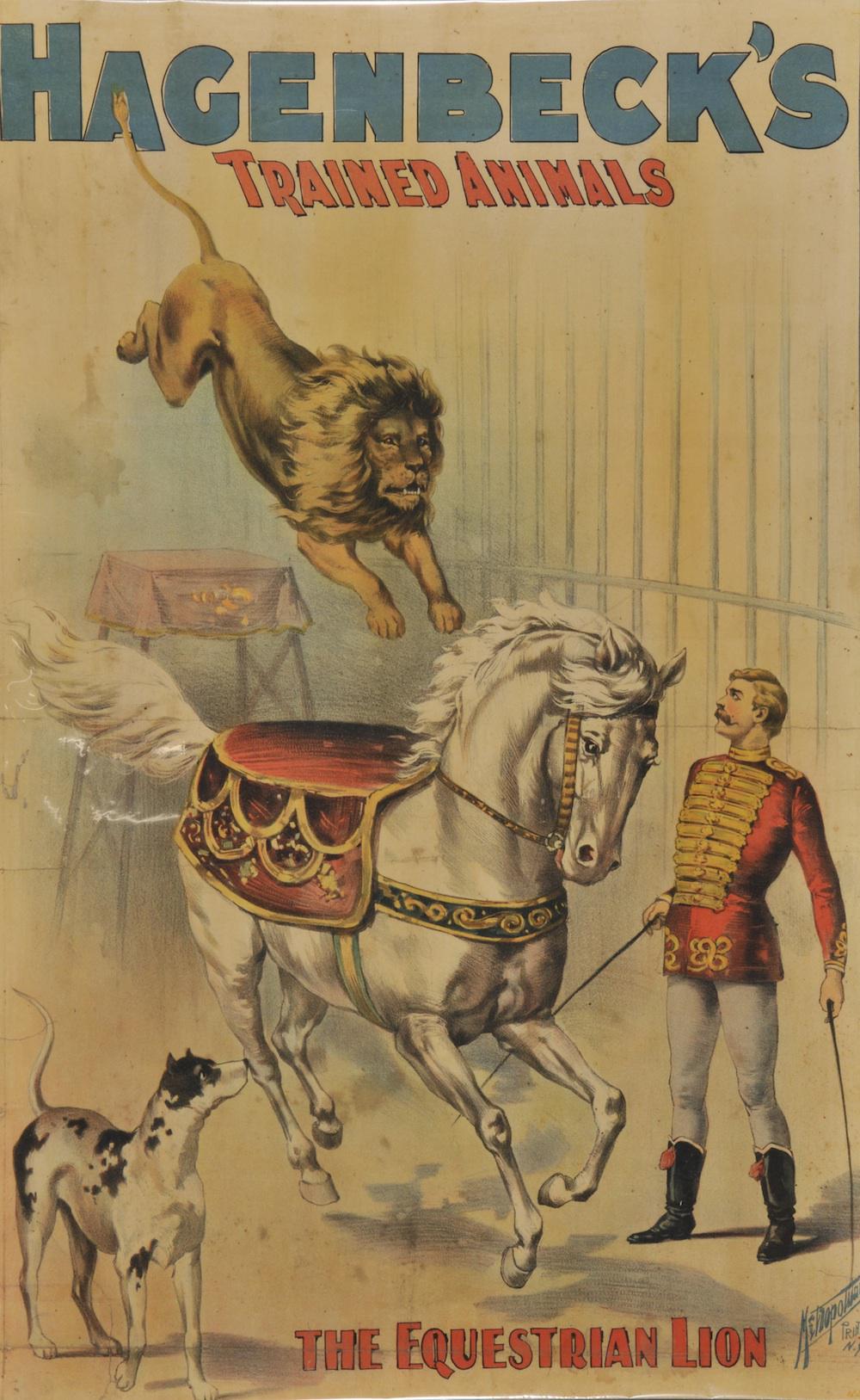
Courtesy of the Harry Ransom Center, University of Texas at Austin.
Carl Hagenbeck was a German animal dealer and entrepreneur, probably now best remembered for redesigning zoo exhibits to mimic animals’ natural habitats. Hagenbeck founded his circus in 1903 and merged with the Wallace and Co. Circus in 1907. Historian Nigel Rothfels writes that the “Equestrian Lion” was a “signature act,” demonstrating the Hagenbeck brand’s complete control over animal nature.
A 2008 National Geographic image shows a horse-riding lion in a Chinese circus, proving that the practice is not completely dead.
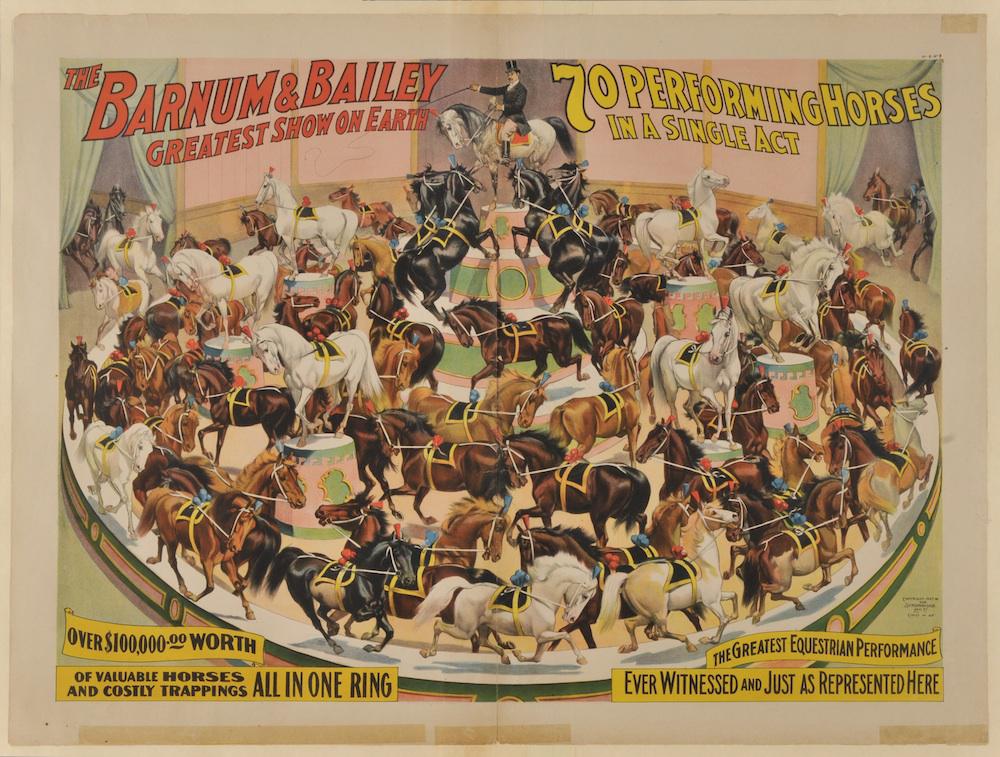
Courtesy of the Harry Ransom Center, University of Texas at Austin.
Circus advertisers liked numbers almost as much as Internet headline writers do. In this 1897 print, Barnum & Bailey touted not only the number of horses in the ring, but also their fine nature: “Over $100,000 worth of Valuable Horses and Costly Trappings ALL IN ONE RING.”
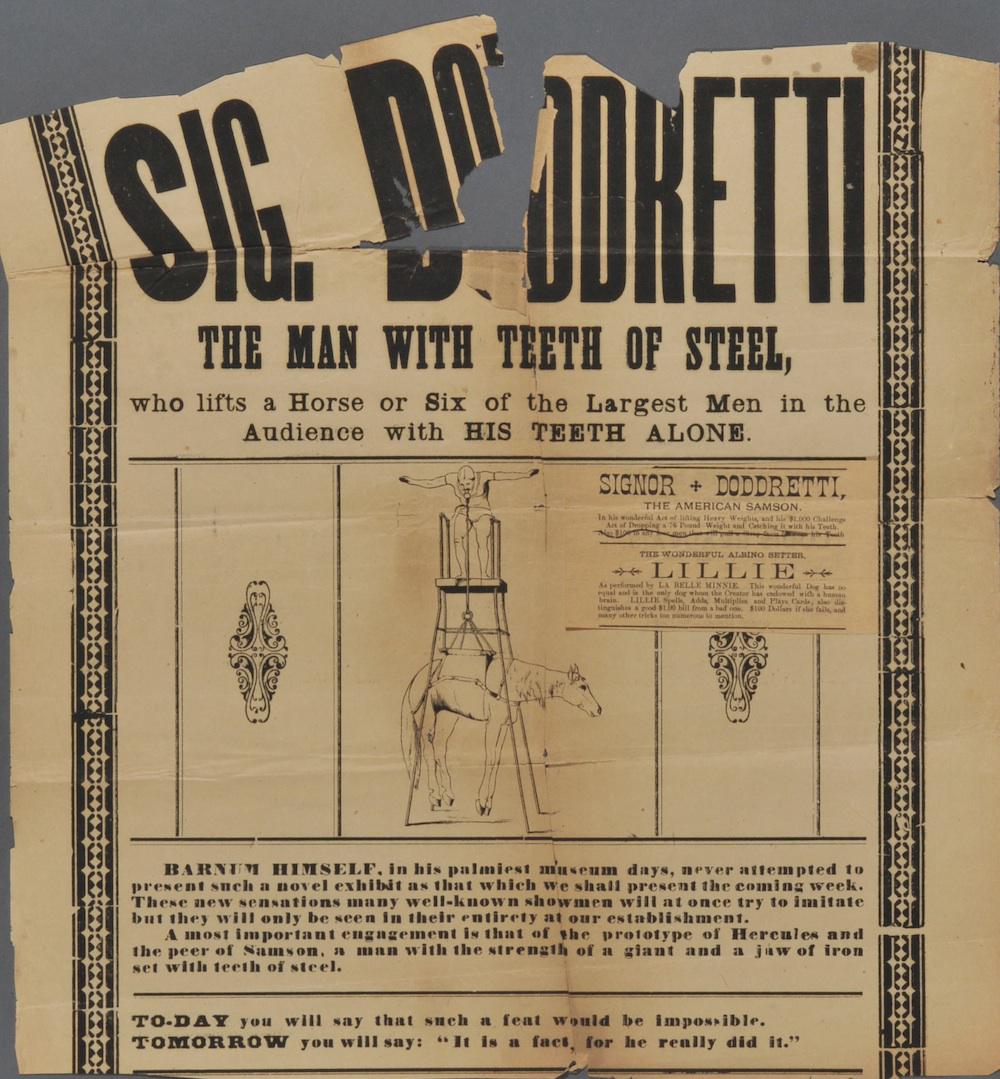
Courtesy of the Harry Ransom Center, University of Texas at Austin.
Iron-jaw acts often featured female acrobats who would clamp onto padded bits with their teeth and swing, without any supporting hold or safety harness, across the big top (or the streets of New York City). Here, Signor Doddretti, a “strongman,” lifted a docile horse with “His Teeth Alone.”

Courtesy of the Harry Ransom Center, University of Texas at Austin.
As Davis writes, circuses loved to display large and powerful animals—the bigger and more “bloodthirsty,” the better. Hype aside, hippopotami don’t sweat blood, though the ancient Greeks thought they did. In 2004, scientists found that the red, sticky excretion they produce has anti-UV properties and acts as a natural sunscreen. (While this poster is undated, Clyde Beatty and Cole Brothers combined in 1957.)
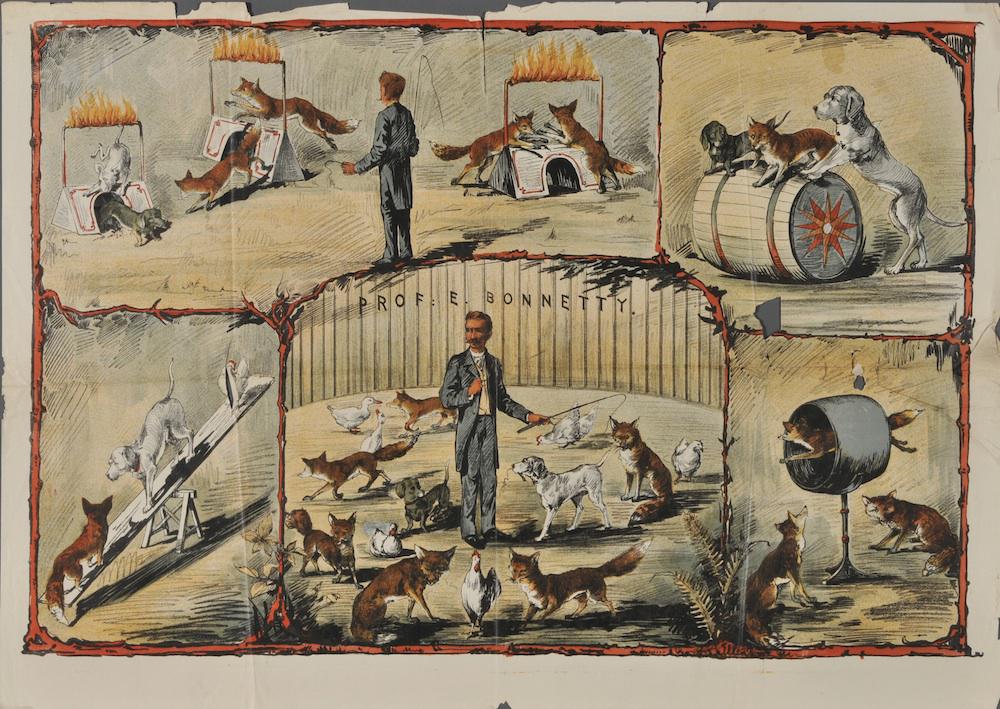
Courtesy of the Harry Ransom Center, University of Texas at Austin.
Bonnetty (not an actual professor) was a Dutch performer who made foxes and hounds work together, and enticed them to ignore live chickens and ducks in their midst. Bonnetty also famously trained a troupe of cats, bypassing their instincts to kill. Writer Ernest Ingersoll attended a performance and described it in 1897, telling how a “flock of canaries,” “some white mice and dappled gray rats” were set free to mix with the fifteen or twenty cats. “They caught these little animals, their natural prey, and played with them, holding them in their paws, and even in their teeth, without doing them the slightest injury,” Ingersoll wrote.
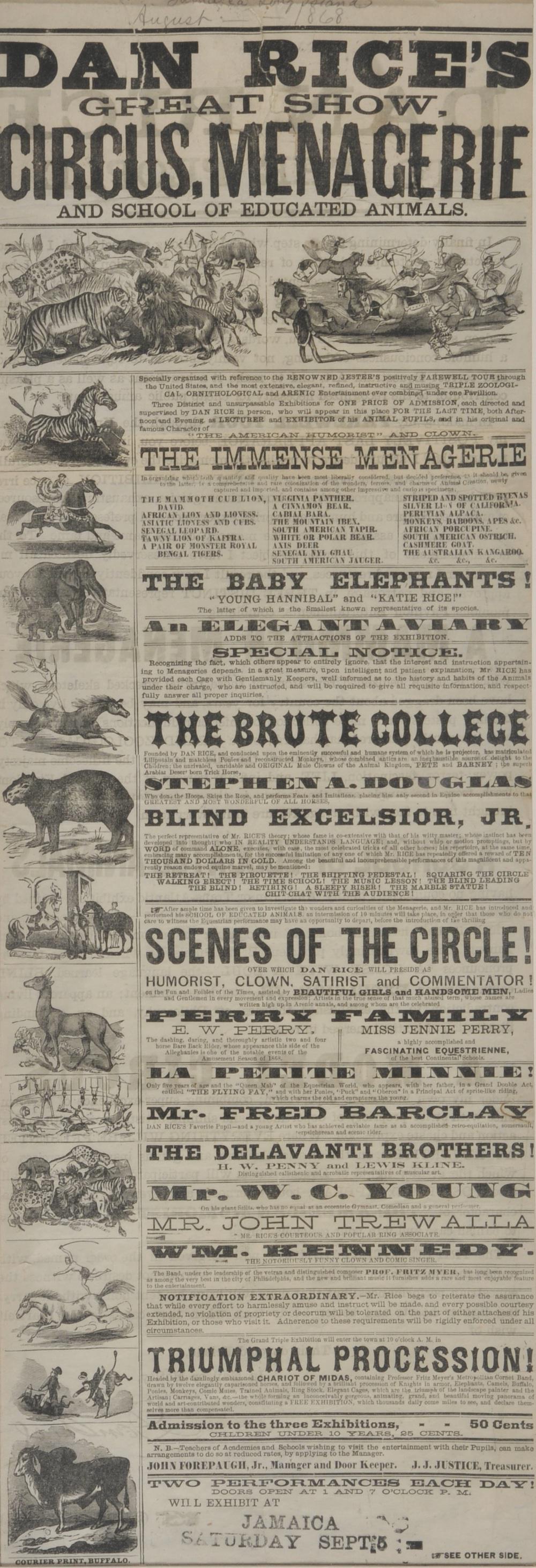
Courtesy of the Harry Ransom Center, University of Texas at Austin.
The clown and entrepreneur Dan Rice ran a series of circuses in the middle nineteenth century. This bill, in its tiny print, shows how Rice, adjusting to new strains of Victorian morality in the second part of his career, sold his menagerie as an educational experience. The ibex, tapir, capybara, “cinnamon bear” (a subspecies of black bear), and “Senegal leopard” were all accompanied by “Gentlemanly Keepers, well informed as to the history and habits of the Animals under their charge, who are instructed, and will be required to give all requisite information, and respectfully answer all proper inquiries.”